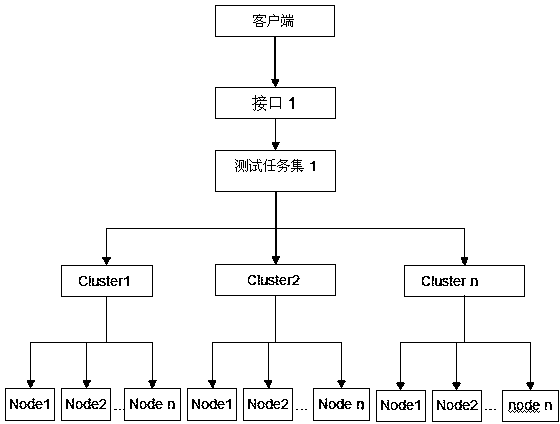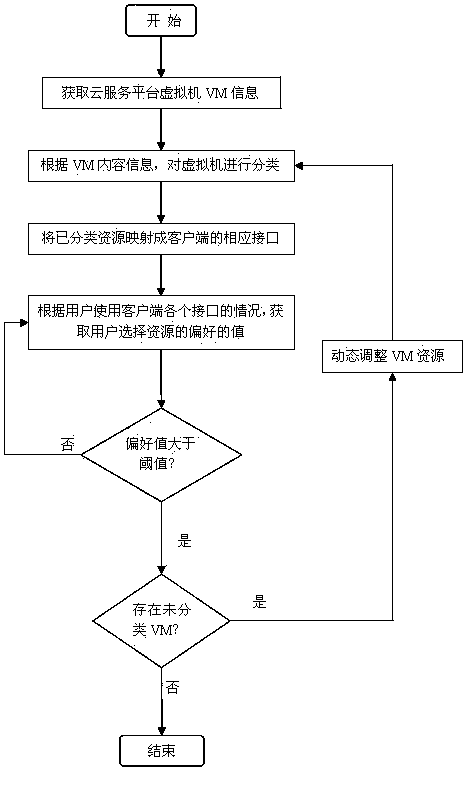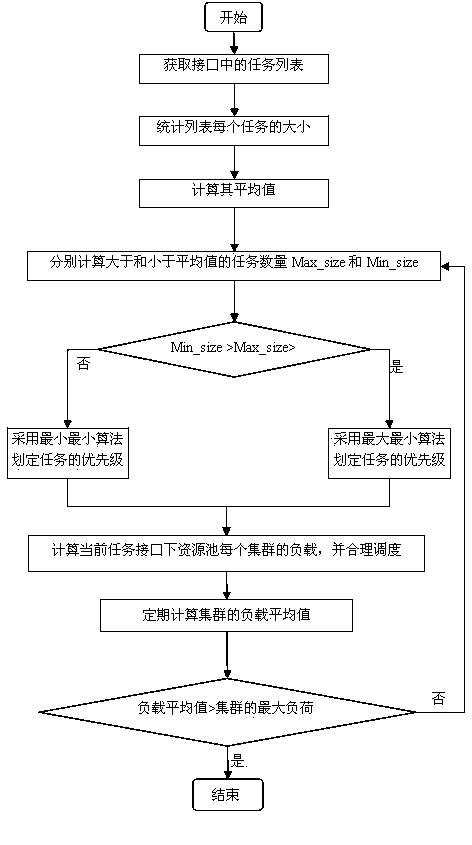Multi-interface-based self-adaptive cloud service test method
A test method and self-adaptive technology, applied in the direction of digital transmission system, electrical components, transmission system, etc., can solve the problems of inability to handle tasks and low processing efficiency, and achieve the goal of solving large tasks, improving efficiency, and satisfying individualization effect of demand
- Summary
- Abstract
- Description
- Claims
- Application Information
AI Technical Summary
Problems solved by technology
Method used
Image
Examples
Embodiment Construction
[0090] The invention is a self-adaptive cloud service testing method based on multiple interfaces. Firstly, the multi-interface uploading interface is developed; secondly, the interface task set is divided; finally, cluster nodes are dynamically executed to test tasks. Specific steps are as follows:
[0091] Step 1) Development of multi-interface upload interface, the specific process is as follows figure 2 Shown:
[0092] Step 1.1) For a specific cloud platform, obtain information about all virtual machines that the current cloud service platform can provide;
[0093] Step 1.2) Screen the cloud platform information. According to the test requirements, the cloud platform resources are combined into multiple resources from the type of operating system (OS) of the virtual machine provided by the cloud platform, the type of the Internet (WEB) server, and the type of database. Assuming that there are n1, n2, and n3 types of OS, WEB server, and database respectively, then n1×n2×...
PUM
 Login to View More
Login to View More Abstract
Description
Claims
Application Information
 Login to View More
Login to View More - R&D
- Intellectual Property
- Life Sciences
- Materials
- Tech Scout
- Unparalleled Data Quality
- Higher Quality Content
- 60% Fewer Hallucinations
Browse by: Latest US Patents, China's latest patents, Technical Efficacy Thesaurus, Application Domain, Technology Topic, Popular Technical Reports.
© 2025 PatSnap. All rights reserved.Legal|Privacy policy|Modern Slavery Act Transparency Statement|Sitemap|About US| Contact US: help@patsnap.com



